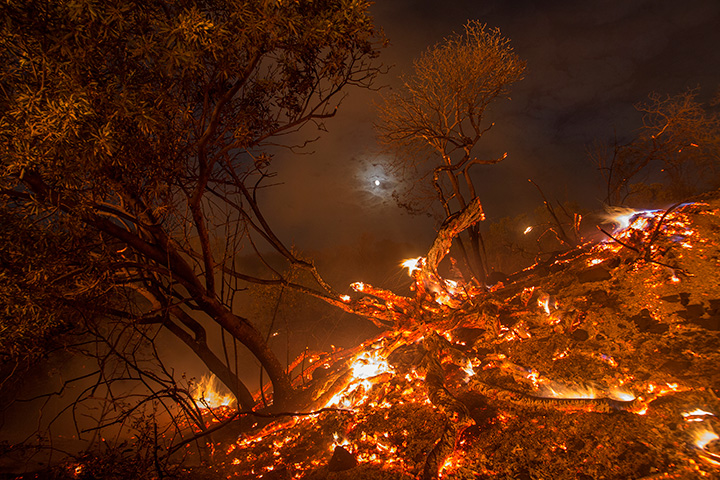Climate change didn’t directly cause major wildfires in Alberta and British Columbia this year but it did contribute to their extreme nature, says a University of Alberta researcher.

B.C. recorded its worst-ever fire season. Wildfires that began in early April scorched just over 12,000 square kilometres of timber, bush and grassland and at their height forced 45,000 people from their homes.
Last month, Waterton Lakes National Park was evacuated after lightning sparked a blaze just inside the B.C. boundary. The flames eventually crossed into the park in southwestern Alberta.
READ MORE: Mother Nature will restore Waterton forest after wildfire but it could take decades: expert
Watch below: Some videos from Global News’ coverage of the Waterton-area wildfires in the summer of 2017.
And this last week, wind-whipped grass fires quickly spread and threatened communities in a swath stretching from the Crowsnest Pass in southwestern Alberta all the way into Saskatchewan.

Get breaking National news
The phenomenon isn’t just in Western Canada, says Mike Flannigan, a professor of wildland fire at the University of Alberta. He points out fires around the world this year have been “head and shoulders above the previous record.”
“There’s been deadly fires and historic fires in Chile, Portugal – twice – and California,” Flannigan said in an interview.
“It’s been quite a devastating year globally and the California fires will be the most expensive … (with) tens of billions in losses.”
READ MORE: California wildfire death toll approaches 40, hundreds still missing
Watch below: Body camera video from October 2017 gives insight into a harrowing evening for a Sheriff’s deputy rescuing civilians during the California wildfires

Flannigan said human-caused climate change isn’t the root cause of fires, but has made them much worse. Global warming has made conditions more favourable for intense flames.
“With warmer temperatures, the fuels will be drier, and when a fire goes through, there’s more fuel to consume,” he said.
“It makes it more extreme. Winds are a little stronger, the temperatures are a little higher and it’s a little drier.”
Flannigan said warmer temperatures also spawn an increase in lightning activity. For every degree the temperature rises, there’s a 12 per cent increase in lightning.
Fires have certainly increased in the last several decades, he said.
“The amount of fire activity in Canada, which currently is about 2 1/2 million hectares – about half the size of Nova Scotia – has doubled since the 1970s.”
The Insurance Bureau of Canada has been watching weather trends with a wary eye.
“The whole issue of climate change and the severe weather that results from it has been discussed for years … but really in the last decade we’ve just seen an explosion in the incidents and the severity of these extreme weather events,” said Bill Adams, the Insurance Bureau of Canada’s western vice-president.
READ MORE: One year after Fort McMurray wildfire, experts warn of increased threat
“It’s really a continuation of what we’ve seen for many years where the traditional weather patterns that we’ve grown up with … we can’t rely on them any longer.”
Adams said disasters in Alberta have accounted for about 70 per cent of all claims paid out in the last eight years. Fires, floods and hail account for most.
“There’s no question that Alberta has been the epicentre in the Canadian context of the majority of the severe weather events in the last number of years.”




























Comments